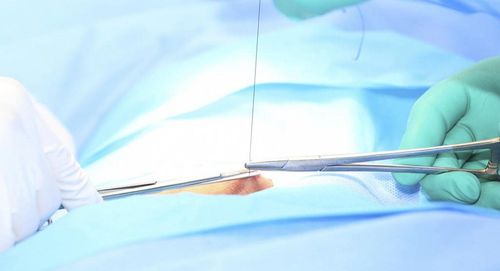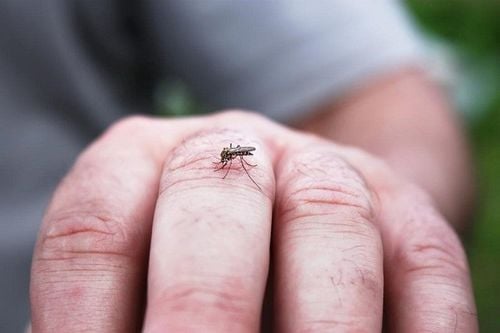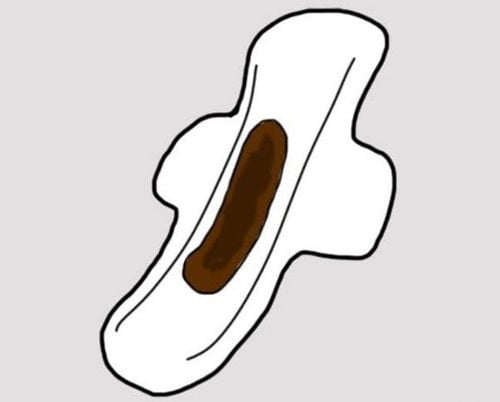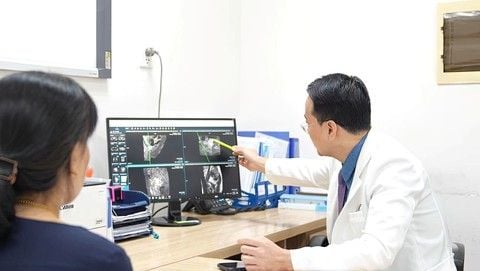The condition of the ear lobe discharging fluid or pus can be a sign of serious ear conditions such as ear eczema, cellulitis, auricular cartilage infection, and most commonly, acute otitis externa. Let’s explore the causes, treatments, and ways to manage yellow discharge from the ear in the following article.
This article has been medically reviewed by ENT specialists from the Department of ENT & Internal Medicine, Vinmec Ha Long International General Hospital.
1. Causes of Discharge from the Ear Lobe
Yellow or pus-like discharge from the ear lobe often occurs due to the following causes:
1.1. Ear Eczema
Ear eczema causes symptoms such as redness, discharge, and itchy skin due to exposure to allergens. If the condition becomes infected, the ear lobe may discharge fluid or pus in larger amounts. Ear eczema is a type of skin condition and does not affect hearing or the inner structures of the ear. However, the symptoms can cause discomfort, itching, and restlessness if not treated correctly.
1.2. Auricular Cellulitis
Auricular cellulitis occurs due to an infection in the deepest layers of the skin. This is a serious condition that may lead to dangerous complications. Symptoms typically include blistering skin, pain, burning sensation, along with discharge and swelling.
1.3. Auricular Cartilage Infection
Auricular cartilage infection is a secondary infection following a strong trauma. Physical trauma can damage the blood vessels in the ear lobe, causing blood to accumulate. If blood vessels are damaged, it reduces the circulation that nourishes the ear cartilage, leading to the appearance of yellow discharge or fluid. Initially, the secretion is sterile, yellow, or white in color, but if left untreated, it can lead to a secondary infection due to bacterial invasion and growth.
1.4. Acute Otitis Externa
One of the most common causes of ear lobe pus is acute otitis externa. This condition occurs due to an infection at the outer opening of the ear canal. People with acute otitis externa often experience symptoms such as ear pain, reduced hearing, mild fever, tinnitus, and yellow or watery discharge from the ear lobe.
Treatment for acute otitis externa has a high success rate and rarely leads to significant complications. However, if left untreated, complications such as malignant otitis externa, cellulitis, tympanic membrane perforation, and ear canal stenosis may arise.

1.5. Other Causes
In addition to the conditions listed above that can cause yellow discharge from the ear lobe, several other factors may also contribute to this issue:
- People who have piercings in the ear lobe but do not clean the ear properly and adequately.
- Individuals allergic to earrings or hair sprays.
- People who do not clean their ears regularly and properly, creating an environment for bacteria to grow.
- Frequent phone use that leads to nerve damage in the ear lobe.
- Water retention in the ear after showering or swimming.
2. Treatment for Acute Otitis Externa (Pus Discharge from the Ear)
The treatment for pus discharge from the ear lobe depends on the specific cause and severity of the condition. In some cases, patients need to visit medical facilities for examination, diagnosis, and appropriate treatment plans.
2.1. Treatment of Related Conditions
One of the ways to treat pus discharge from the ear lobe is to address the underlying conditions that lead to it. Specifically:
- Treatment of Ear Eczema: The treatment involves using antihistamines, oral antibiotics, and topical steroid creams as prescribed by a doctor. Additionally, patients should follow a proper diet and lifestyle to prevent complications and further flare-ups.
- Treatment of Auricular Cellulitis: Patients may need to take antibiotics for 10-14 days as prescribed by the doctor, alongside pain relievers and fever reducers if there is high fever or intense pain in the ear.
- Treatment of Auricular Cartilage Infection: If detected early, the condition can be treated with painkillers, antibiotics, and anti-inflammatory medications. This treatment is combined with proper ear care and hygiene. In cases of discharge, patients may need to drain the fluid and continue treatment with antibiotics. For patients who have developed a secondary infection or an abscess, the doctor will perform drainage to remove the pus and clean the infected ear cartilage, along with prescribing antibiotics to eliminate the bacteria causing the infection.
- Treatment of Acute Otitis Externa: Treatments for acute otitis externa include topical medications, ear drops containing acetic acid, corticosteroids, and local antibiotics if necessary. For mild cases, the ear can be treated by adjusting the pH with 2% acetic acid and reducing inflammation with hydrocortisone ear drops (5 drops, 3 times a day) for approximately 7 days. For moderate cases, antibiotics and corticosteroids are recommended. Before starting treatment, the patient needs to remove debris or infected tissue from the ear canal using suction or cotton swabs. Patients should avoid getting water in the ear during this process.
Most of these conditions are not dangerous and do not cause serious complications if the patient follows the treatment plan. However, if left untreated, they can lead to cartilage and soft tissue damage, as well as significant hearing impairment.

2.2. Proper Ear Hygiene and Changing Unhealthy Habits
If the yellow discharge from the ear lobe is caused by poor hygiene and unhealthy habits, patients should adopt proper ear care practices and change the following habits:
Tips for Cleaning the Ear:
- Use a clean, damp cloth to gently wipe the ear lobe and surrounding ear area. Then twist the cloth lightly to clean the outer ear canal.
- Use specialized ear cleaning solutions or saline (sodium chloride) to clean the ear canal.
Habits to Change:
- Do not use sharp or hard objects to clean the ear.
- Avoid allergens, such as hair spray, earrings, or shampoos that can cause irritation.
- If the ear is injured, seek medical attention to detect any infections and treat them promptly.
- Wear ear protection when showering or swimming to prevent water from entering the ear canal.
- Ensure full treatment of any ear, nose, or throat issues to prevent complications from affecting the ear.
There are many causes of ear lobe discharge, and the treatment plan will vary depending on the cause and symptoms. While the condition may not directly affect overall health, it can impact hearing over time. Therefore, if you notice any abnormalities or yellow discharge from your ear, you should visit a medical facility for examination and treatment to prevent serious complications.
To arrange an appointment, please call HOTLINE or make your reservation directly HERE. You may also download the MyVinmec app to schedule appointments faster and manage your reservations more conveniently.








